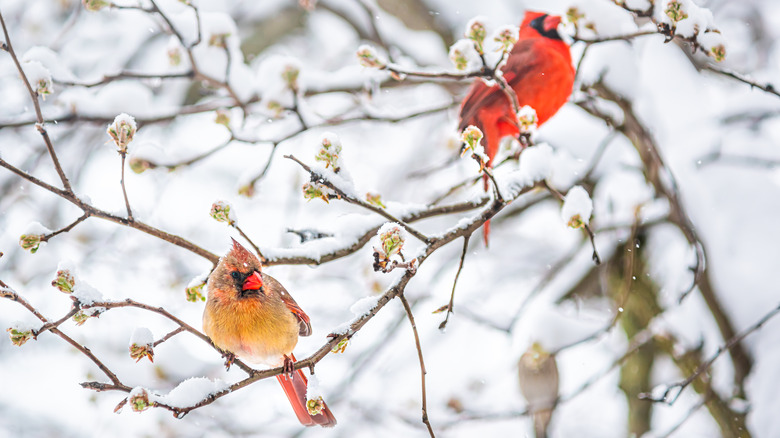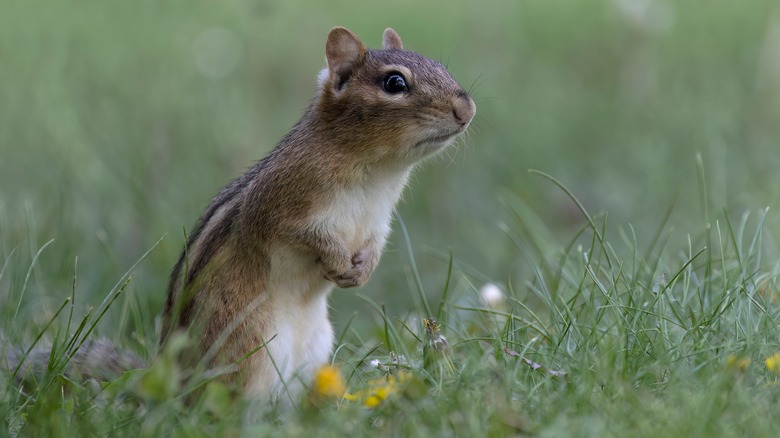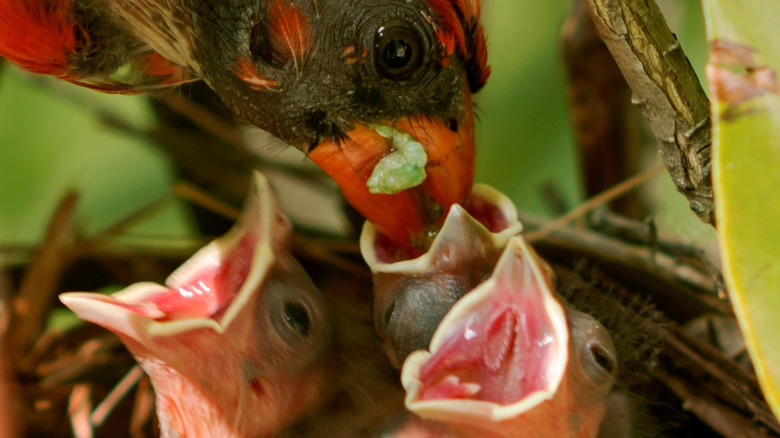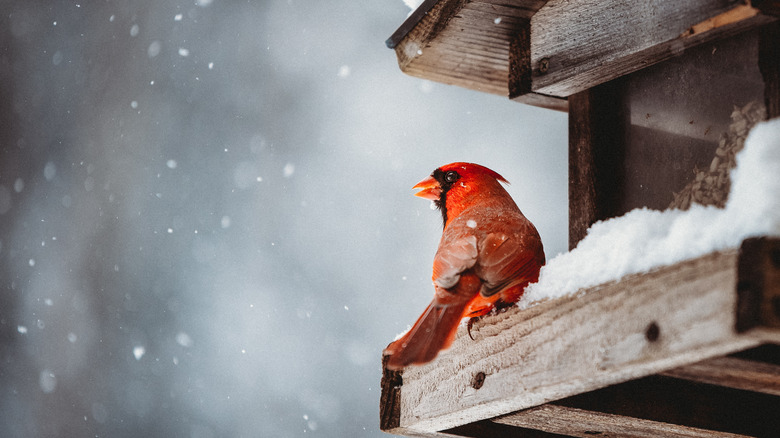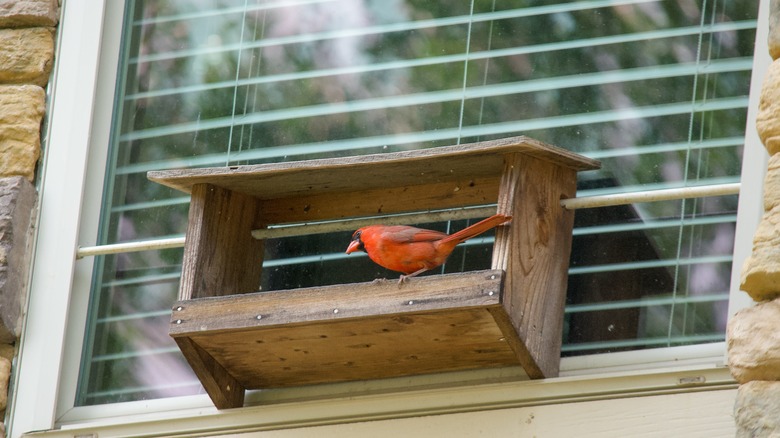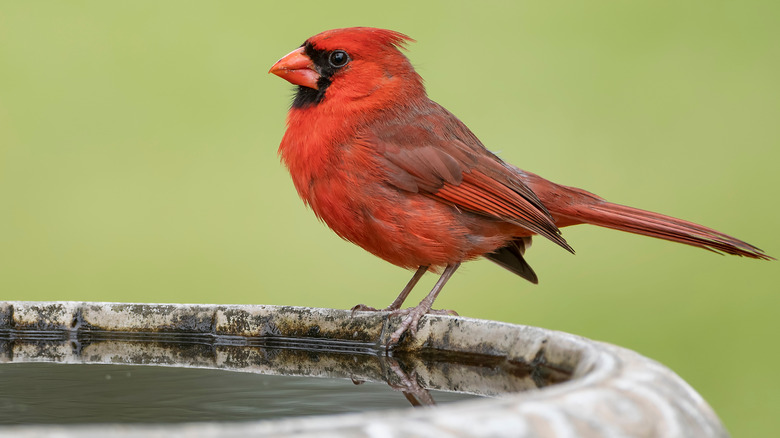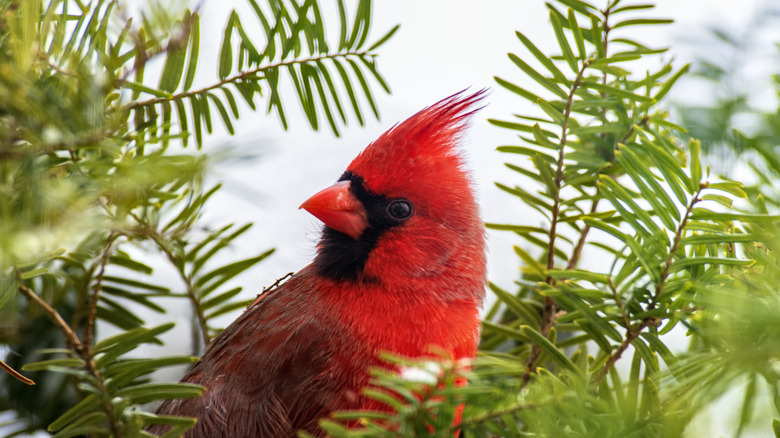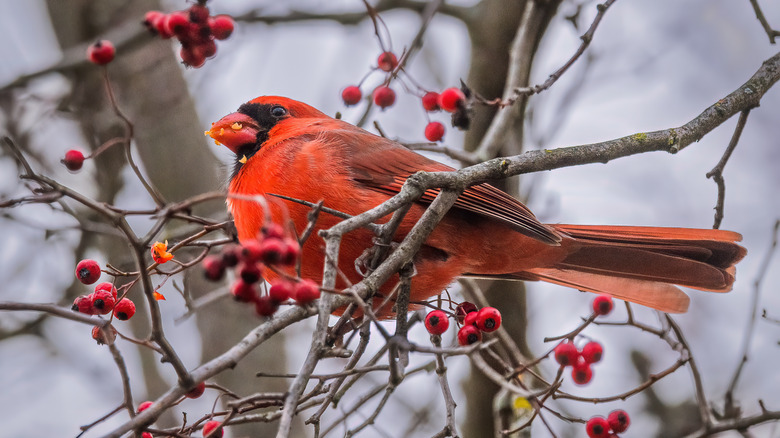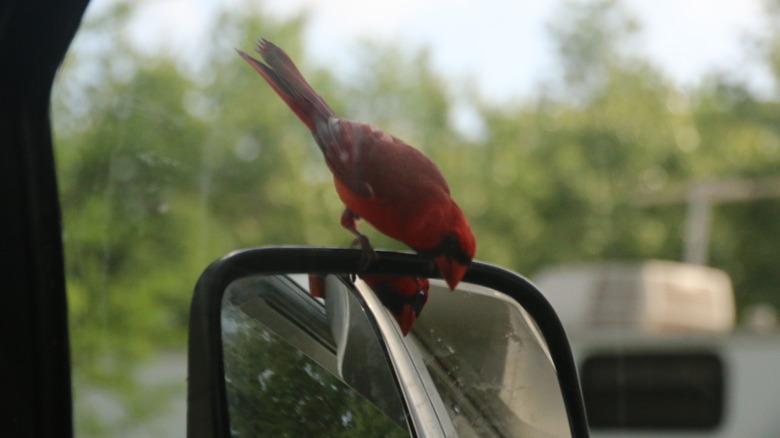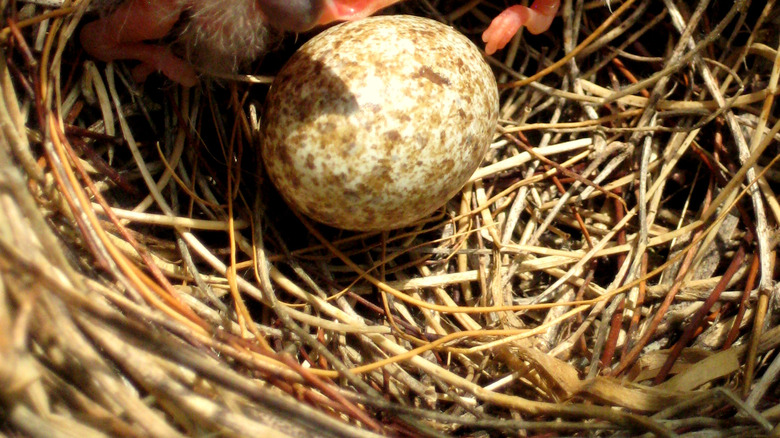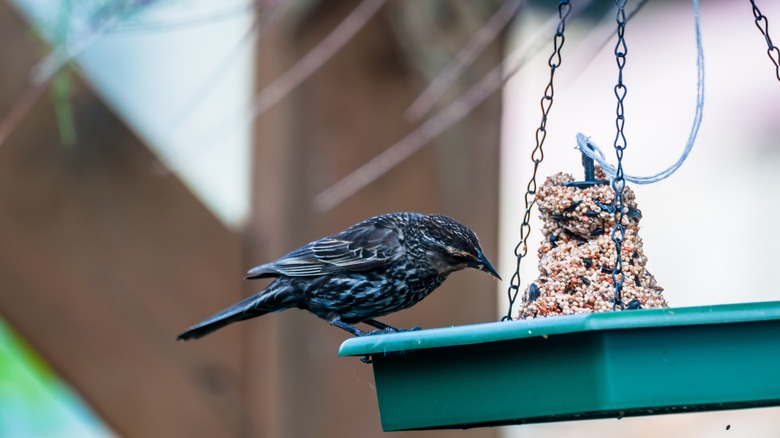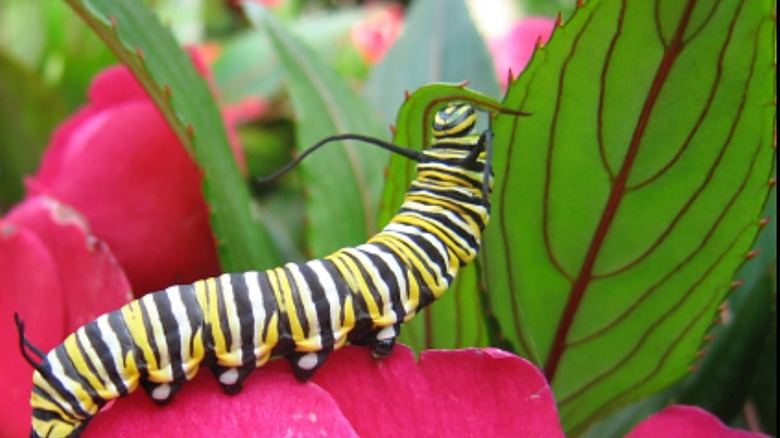11 Reasons Cardinals Want Nothing To Do With Your Yard
If you've noticed that cardinals seem to avoid your yard, you're likely disappointed and looking for a way to lure them back. The way to do so is to figure out why cardinals seem to want nothing to do with your outdoor space and fix the problem. Making the space more inviting for these beautiful birds (and less inviting to their predators) will increase the likelihood that they will visit your backyard again.
In many cases, a few simple changes are all you need to make your outdoor space feel more inviting to feathered friends. It may simply be a matter of trying a different bird seed, getting a different feeder, or adding a bird bath. You don't need a big budget or a complicated plan. Just a few simple tweaks will usually do the trick. Once you have your bird mojo dialed in, cardinals should come flocking back to your yard in no time.
Your yard is hosting predators
Cardinals will avoid your yard if it hosts predators who might harm them. The most obvious predators may be outdoor or feral cats, but cardinals watch out for other predators as well. Snakes and many small mammals, including squirrels and chipmunks, are known to make a meal out of cardinal eggs.
You can't completely eliminate predators, but there are humane ways to keep unwanted predators out of your yard. Clean up tasty treats, such as fruit and nuts that fall from trees. Wood piles, tall grass, and dense weed patches are inviting for small mammals and snakes, so make sure you eliminate them. You can also try repelling small animals with scents and flavors they dislike. Sprinkling cayenne pepper, peppermint, garlic, or coffee grounds around your property may discourage unwanted visitors. Experts state that in many cases the capsaicin in peppers does work, but many home repellants are based mostly on anecdotal stories from gardeners who swear by them.
Your timing is off
Cardinals tend to be active first thing in the morning and rest in the afternoon, so you may not see them if you're looking for them late in the day. It's also common for cardinals to lose interest in your yard and bird feeder during the summer months when natural food sources are easy to find. Cardinals don't migrate, but insects, berries, and other tasty treats are readily available in the summer. So, they simply may not need to spend as much time hanging around the bird feeder in your garden.
Your best chance of seeing these birds is to fill your bird feeder early in the day and keep an eye out for them while enjoying your morning coffee. It's also helpful to keep your feeder full during the winter when natural food sources become scarce. Cardinals breed between March and September, usually raising two broods during that time. If you provide safe nesting spaces, you're likely to see quite a bit of the male cardinal who will routinely bring food back to the female while she incubates the eggs. Cardinals prefer to build their nests 5 to 10 feet off the ground in bushy shrubs and vines.
Your seed isn't quite right
Cardinals can be picky eaters. They absolutely demand fresh, high-quality seed. You won't keep going back to a restaurant that serves bad food, and neither will cardinals. You need to make sure you're providing them with fresh, clean seeds free of any mold or mildew. Even a small amount of either will turn a cardinal off, so it's important to clean your feeder at least every 2 weeks. And while that low-quality bird seed will save you money, it might not encourage your cardinals to return, so spring for the good stuff.
Of course, the types of seeds you offer also make a difference. Cardinals have favorite foods just like people. They prefer black-oil sunflower seeds, striped sunflower seeds, safflower seeds, and white milo. Cracked corn and crushed peanuts make a nice treat on occasion as well. The best thing to do with your bird feeder during the winter is to fill it with suet as it's heavy on calories and can help the birds stay warm. Cardinals will also seek out a steady food supply. If you neglect your feeder but your neighbor keeps his full, they are more likely to visit his yard than yours.
You feeder isn't supportive enough
Cardinals are bigger than the average backyard bird, and many hanging bird feeders can unexpectedly tilt under their weight. This frightens the birds and makes feeding uncomfortable, which may encourage them to avoid your bird feeder. A frightened bird also may not come back to your yard.
Make sure you keep your bird happy by purchasing a well-built, sturdy feeder. You can mount the feeder on a pole or, depending on the style, on a fence or a wall. You can also use a hanging feeder, but it must be weighted and balanced properly. Fortunately, there is a simple test you can perform to see if your feeder will tip under the weight of a visiting cardinal. Adult cardinals weigh about the same amount as nine nickels. To test your feeder, stack the coins near the edge of the feeder platform and see if the feeder tilts or tips. If it does, you need to find a better way to secure it.
There's no water
Like all animals, cardinals need both food and water to survive. Cardinals drink water, of course, and so will look for a steady supply if they can. They also use water to bathe in, and this is very important for them to maintain the health of both their feathers and their skin. If your yard is more desert than oasis, cardinals will go elsewhere.
The simple solution here is to add a bird bath to your yard. But as is true of your bird feeder, it's important to keep your bird bath clean. Avoid harsh soaps and cleaners, however, as the residue from these could harm the birds. Instead, clean the bird bath with a solution that is one part vinegar and nine parts water. You should clean and refill it every two or three days. Your bird bath will likely get dirty faster if it's under a tree, so be sure to pick a sunny spot where leaves and other debris won't fall in. Consider adding an inexpensive heater during the winter months to prevent freezing.
Your yard lacks cover
Any animal that has natural predators is going to be uncomfortable sitting out in the open. Cardinals like spaces with lots of shrubs that they can feel safe in. You may have opted for a simple, open landscape to make mowing and other lawn maintenance tasks easier, but this may be a turn-off for cardinals.
If you want more cardinals, you can always add more plants to your yard. A smart way to do so is to attract birds with native plants. Because they have evolved and developed in your local area, they are used to the local weather conditions and are easy to care for. Many can simply be planted and left to their own devices with little to no maintenance or help from you. Birds like native plants, as well, since the natural local flora is what they're used to.
You can make your life easier by choosing native varieties that don't drop much debris on the ground. If you hate raking leaves, evergreens are an excellent option, especially since cardinals stay put in the winter and may enjoy the extra cover. Keep in mind that you don't have to go big. You need not plant trees that may interfere with overhead power lines. Shrubs and vines work better for attracting cardinals who tend to hang out closer to the ground than many other birds.
There are no berries
Birdseed can provide sustenance but does not make for a complete, nutritional diet. Cardinals don't just enjoy fresh berries but also require them for optimal health. Plus, the colorful fruits help give the birds their vibrant red hue. If your yard lacks a source of berries, the birds may go where the harvest is more bountiful. They need a balanced diet, and berries are an important part of it. If you don't have any fruit-producing plans in or around your yard, you may not have any cardinals either.
To keep their color, cardinals rely on fruits rich in carotenoids such as raspberries, wild grapes, apples, and honeysuckle. They also enjoy berries from many other plants including dogwood trees, clematis, sumac, mulberry, and blueberries. Plant shrubs that provide fresh berries but are low to the ground, as cardinals tend to forage for berries close to ground level.
They see themselves
Cardinals can be somewhat territorial. If you have shiny, reflective surfaces in your yard, cardinals may see their reflection and attack it. Cardinals may leave your yard if they see their own image and think they have stumbled into another bird's territory.
Take a look around your yard and see if you have anything reflective or shiny that could cause a problem. Try and keep bird baths, feeders, and nesting sites well away from your windows or other reflective surfaces. You can discourage the birds from attacking their reflection in windows with screens or bird netting. You can also cover car mirrors if you find your visiting birds attacking them. It's also wise to make sure you don't have shiny surfaces in your yard that can move or create the appearance of movement like sun catchers or wind chimes. These are often used to create motion and scare off unwanted animals, and they can do the same to visiting birds.
There is no nesting material
During mating season it is important to provide places to nest, but having a place to build a home does no good if there are no building materials. Cardinals need nesting materials with which to build. Nature provides these materials, of course, but humans often rake them up, viewing them as yard waste. This forces nesting cardinals to look elsewhere.
You likely already have lots of potential nesting materials in your yard. All you have to do is leave it there. Cardinals will use small leaves, twigs, bark, grass clippings, and pine needles to build their nests. You can even make life easier for the cardinals by gathering these items and hanging them in an empty suet feeder for easy access. But, don't offer items like yarn and dryer lint, however. Many websites recommend these items, but dryer lint simply dissolves into a mess when it rains. Yarn and bits of string can easily become wrapped around young hatchlings in the nest and cause problems.
More aggressive birds have moved in
Although they will defend their territory when other cardinals move in, they're more timid around many other bird species. Once you have the conditions around your bird feeder dialed in, it may attract more than just cardinals. If more aggressive birds such as European starlings or common grackles move in, your cardinals will simply avoid the feeder while they are present.
There isn't much you can do to exclude these aggressive birds except to scare them off when you see them. Fortunately, your cardinals will pretty much take care of the problem themselves by feeding at different times to avoid the birds they don't like. You can help by making sure your feeder is full early in the morning and late in the day. These are the times when most bird species will move on and the cardinals can return to the feeder.
Your yard lacks baby food
High-quality bird seed is a must for attracting cardinals, but it's not something that the birds can feed to their young. Providing nesting spaces during mating season is great, but the birds also need a source of food for their babies. Usually, this food is caterpillars and other soft-bodied insects. Unfortunately, many of the pesticide products we use to keep our lawns and gardens free of pests also kills these bugs, limiting the food supply.
If you want more cardinals, you need more insects. The first step to getting them is to stop using pesticides in your yard. There are many ways to keep pests out of your garden, and these include beneficial insects that can target specific garden pests while leaving caterpillars alone. You can also encourage the insect population and thereby cardinals by adding plants they like. These include spices like dill, parsley, and fennel that make great additions to an herb garden. Other caterpillar-friendly plants include coneflowers and milkweed.
